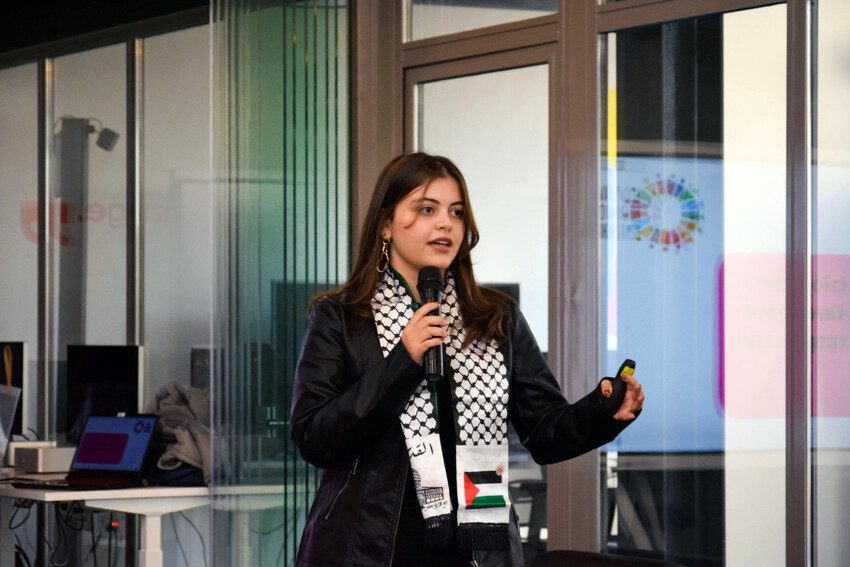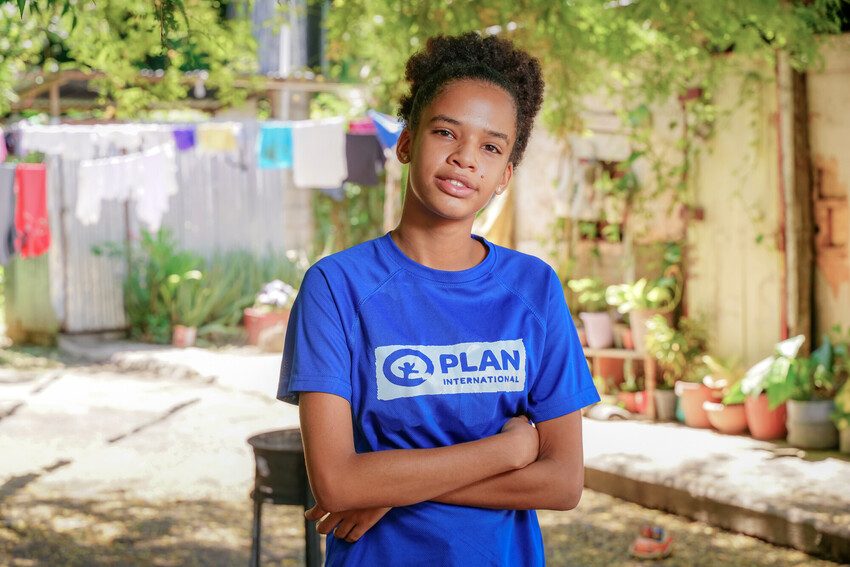Helping young people access sexual and reproductive health services
Nester, 24, is a fully-trained expert in sexual and reproductive health and rights, who has helped up to 500 young people access contraception, support and v…
Brother and sister Mubaarik, 8, and Marwa, 9 from Somalia. Image credit: Plan International / Izla Bethdavid.
Gender inequality is the condition in which access to rights, resources, and opportunities is unequally distributed between genders, including men, women, boys, girls, and individuals of other gender identities.
This disparity stems from deeply ingrained social norms and power structures that perpetuate discrimination and the unequal distribution of power and privileges.
Gender inequality exacerbates the challenges faced by those who are already marginalised, making it a critical issue to address to achieve social justice and equality.
Gender bias is the preferential treatment and prejudiced assumptions directed towards individuals based on their gender.
This bias manifests through entrenched social norms and power dynamics that favour certain genders over others, influencing the distribution of resources, roles, and responsibilities within society.
Gender bias not only reinforces gender stereotypes but also significantly hampers efforts towards achieving gender equality by limiting the opportunities available to certain genders and affecting their ability to fully participate in and benefit from societal processes.
Gender inequality in the workplace takes many forms — unequal pay, disparity in promotions, incidents of sexual harassment, discrimination, and racism.
In developing countries, girls’ jobs are often vulnerable, informal and unprotected. Girls are more likely to be paid lower wages – if they are paid at all – and be the first to lose their jobs. Globally, women receive 23% less remuneration than men for the same work, and frequently endure poorer working conditions than their male counterparts.
Most of the work girls and young women carry out is unseen and undervalued. They perform the majority of care and domestic work, and prior to COVID-19, they doubled or even tripled the length of their working day, an unfair burden that rose during the pandemic.
Girls also face unique barriers to benefiting from the digital economy and are 5 times less likely than boys to even consider a career related to technology.
Women own less than 20% of the world’s land yet than 400 million of them farm and produce the majority of the world’s food supply. Female farmers lack equal rights to own land in more than 90 countries.

Twenty-two-year-old Aseel from Jordan advocates for education that prioritises student needs for the 21st century, to prevent the most vulnerable from being left behind.
Gender discrimination is the unfair or unequal treatment of individuals based on their gender. This includes any action or attitude that systematically disadvantages or marginalises individuals because of their gender identity or sex, affecting their rights, opportunities, and access to resources.
Gender discrimination is rooted in and perpetuated by entrenched social norms and power imbalances that privilege some genders while disadvantaging others. It is a pervasive issue that intersects with various forms of social exclusion, compounding the challenges faced by those affected, particularly women and girls.
Girls and women suffer most of the negative impact of rigid gender norms and roles. They are more likely to:
Boys and men suffer too. Ideas about what it means to be a man force boys and men to behave in very limited ways which can harm their full development. Negative masculinities encouraged in boys serve to perpetuate the cycle of discrimination and inequality and hinder the progress of society as a whole.
Gender inequality and gender discrimination begin in childhood. From the moment they’re born, girls and boys face unequal gender norms as well as social norms which determine expectations and access to resources and opportunities, with lifelong consequences – in their homes, schools and communities.
For example, the world’s boys are often encouraged to go to school and get an education to prepare for work, while girls carry heavy household responsibilities that keep them from school, increasing the odds of child marriage and pregnancy.
To stop gender inequality, we must:

“Because the practice is informal, the numbers are invisible.”
A great way to make a big effect in the pursuit of gender equality is to join with others. Seek out local campaign groups. Join or set up school or university societies for gender equality and female leadership. There is strength in numbers, more voices tackling a particular issue means they are more likely to be heard.
Helping to raise the profile of campaigns by other marginalised groups is a vital part of ending discrimination. For example, girls from a minority or indigenous community may experience racism as well as sexism, and members of the LGBTIQ+ community may also be experiencing homophobia. Be their allies and lend your voice to their causes.
Gender equality means equal outcomes for women, men and gender-diverse people. ‘Gender equity’ is the process to achieve gender equality. Gender equity recognises that women and gender-diverse people are not in the same ‘starting position’ as men.
Plan International contributes to gender justice by addressing the root causes of inequality and exclusion which are rooted in sexism, ageism, racism, ableism and heteronormativity, and all other forms of discrimination. We believe that we can achieve this by examining how intersecting systems of power and oppression, such as patriarchy and colonialism, are interconnected and impact the people we work with, especially girls and women.
Plan International’s global strategy focuses on striving to create a world where we are all equal, by breaking down the barriers and discrimination girls and young women face every day.